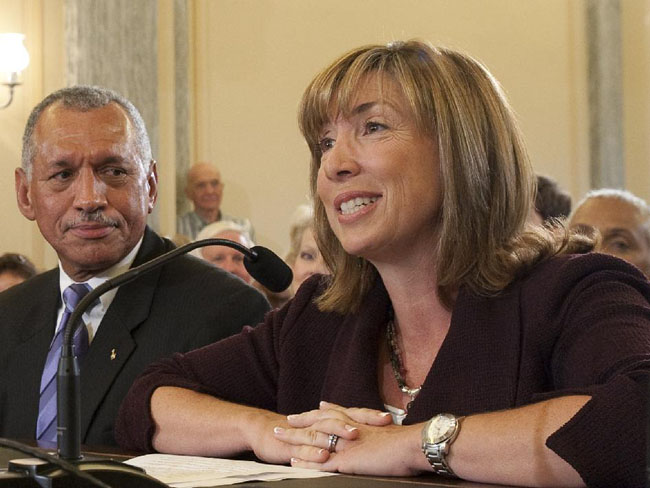Official: NASA Must Evolve Alongside Commercial Spaceflight

NEW YORK ? NASA needs to evolve for the future, not getstuck in the past, the agency's deputy chief said this week.
Speaking at a TEDxMidTownNY event at Manhattan's ExplorersClub, NASA?s second in command, Lori Garver, said it was time to kick startcommercial spaceflight to low-Earth orbit and shift NASA's focus to more ambitiousexploration missions.
"Our space program needs to not be reliving the spaceprogram of the past," she said. "We have been trying to relive Apollofor 40 years now."
Instead of sending astronauts back to the moon, Garverespoused the newplan put forward by President Barack Obama to pursue trips to an asteroidand Mars. Meanwhile, NASA would try to shift the responsibility fortransporting people to the International Space Station to the private sector,which has already made some strides toward commercial spacecraft capable ofreaching orbit.
"At NASA we have a number of plans right now tocommercialize space in a way that we will be really allowing the private sectorto do those things that have become routine, like, if you can believe it,transporting humans to and from low-Earth orbit, while we at NASA do the hardthing, do the next thing," Garver said. [Top10 Private Spaceships Becoming Reality]
This newdirection for NASA ? a change from the previous administration's Constellationprogram tobuild new Ares rockets and Orion spacecraft to carry people back to the moon ?has been a tough sell to some lawmakers and members of the public.
While a NASA authorization bill that recently passedthe U.S. Senate hewsmainly to President Obama's proposal, a bill making its way throughthe U.S. House ofRepresentatives attempts to resurrectlarge parts of Constellation and cut back some of the funding the newadministration proposed for supporting commercial spaceflight.
Get the Space.com Newsletter
Breaking space news, the latest updates on rocket launches, skywatching events and more!
"Tough time in Washington right now to talk aboutchange," Garver said. "But we really believe these are the kinds ofthings that have been coming and they are necessary."
Garver said she and NASA administrator Charlie Bolden, anappointee of President Obama, have been making strides in communicating themessage of the new plan.
"We feel there has been a lot of progress made in ourability to articulate our plan and what it is the President has set out to dowith NASA," Garver told SPACE.com. "We are in communication with allthe stakeholders and really feel like they're all working towards a common goalof the absolute best space program we can have."
TEDxMidTownNY is a local version of the TED Conference, anon-profit that aims to spread new ideas by uniting people from technology,entertainment and design communities. The event was sponsored by the SpaceFrontier Foundation, a space exploration advocacy organization.
Anousheh Ansari, the first female space tourist, also spokeat the event. She reminisced about her 2006 trip to the International SpaceStation ? the fourth anniversary of her flight is on Saturday ? and echoedGarver's hopes for a burgeoning commercial space industry.
- Top 10 Private Spaceships Becoming Reality
- NASA's New Direction: FAQ
- New NASA Spaceships Forge Through Uncertain Atmosphere
Join our Space Forums to keep talking space on the latest missions, night sky and more! And if you have a news tip, correction or comment, let us know at: community@space.com.

Clara Moskowitz is a science and space writer who joined the Space.com team in 2008 and served as Assistant Managing Editor from 2011 to 2013. Clara has a bachelor's degree in astronomy and physics from Wesleyan University, and a graduate certificate in science writing from the University of California, Santa Cruz. She covers everything from astronomy to human spaceflight and once aced a NASTAR suborbital spaceflight training program for space missions. Clara is currently Associate Editor of Scientific American. To see her latest project is, follow Clara on Twitter.
